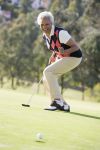We all know that exercise is good for us, but it is often really hard to start or stick to an exercise program. Many reasons keep us from exercising—busy schedules, limited ability to travel, weather and even the sometimes boring nature of exercise routines. These problems are often especially hard on women in midlife, who often have demanding responsibilities at work and at home. One of the ways to overcome these barriers to exercise is to make it more convenient and more fun. Also, while exercise is likely to help with fitness, strength and possibly weight loss, exercise might also help with concentration and alertness.
The University of Pittsburgh Pepper Center is offering a research study of two types of exercise—brisk walking or dancing. This study is for women aged 50 to 65 who are not currently exercising and are at or above their recommended body weight. The study assesses exercise effects on fitness, strength, weight control, mental concentration as well as enjoyment. To be in the study, participants will first undergo health screening and, if eligible, will be randomized (like flipping a coin) to one type of exercise. Participants will be expected to come to the exercise program in Oakland twice a week for two weeks and then once a week for another several weeks. They will then be able to choose whether they wish to exercise on their own or at our exercise site. Researchers will evaluate the effects of the program at 12 and 24 weeks. All participants must be willing to have a brain scan at the beginning and after 12 weeks. Reimbursement is provided for participants’ time and transportation costs related to the scheduled assessments. For further information, contact Courtney at 412-692-2331.
Walking problems, such as walking slower and greater effort to walk, are common among older people. Some older people have similar complaints about thinking and describe thinking as seeming slower and sometimes requiring more effort. Exercise has been shown to improve walking ability and has been helpful in improving thinking, but the best exercise to enhance good walking and good thinking ability is not known. It is important in maintaining safety and daily life activities to know if some type of exercise can help walking while thinking.
 |
The University of Pittsburgh Pepper Center is offering a research study of two types of walking exercise—walking for fitness and walking as a skill. This study is for adults ages 65 and older who have some difficulty walking and thinking. In the study, the effect of supervised exercise on walking ability, thinking ability and walking while thinking, as well as confidence in walking and daily activities, is assessed. To be in the study, participants will first undergo a screening of health and of walking and thinking ability. If eligible, participants will be randomized (like flipping a coin) to one type of exercise. Participants will be expected to come to the exercise program in Oakland two to three times a week for 12 weeks. Researchers will evaluate the effects of the exercise programs midway (at six weeks) and at the end (at 12 weeks). Willing participants may also have a brain scan at the beginning and after 12 weeks. Reimbursement is provided for participants’ time and transportation costs for study visits. For further information, contact Courtney at 412-692-2331.